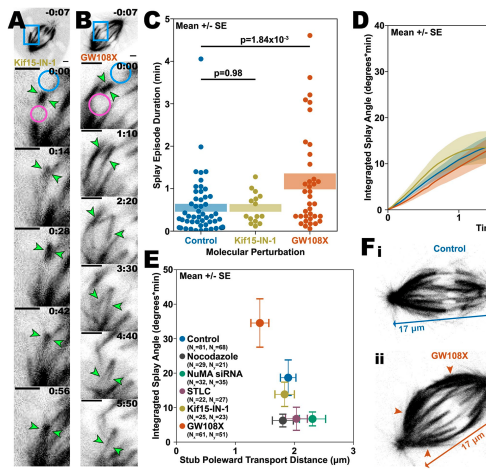Abstract
The mitotic spindle, a self-constructed microtubule-based machine, segregates chromosomes during cell division. In mammalian cells, microtubule bundles called kinetochore fibers (k-fibers) connect chromosomes to the spindle poles. Chromosome segregation thus depends on the mechanical integrity of k-fibers. Here we investigate the physical and molecular basis of k-fiber bundle cohesion. We detach k-fibers from poles by laser ablation-based cutting, thus revealing the contribution of pole-localized forces to k-fiber cohesion. We then measure the physical response of the remaining kinetochore-bound segments of the k-fibers. We observe that microtubules within ablated k-fibers often splay apart from their minus-ends. Furthermore, we find that minus-end clustering forces induced by ablation seem at least partially responsible for k-fiber splaying. We also investigate the role of the k-fiber-binding kinesin-12 Kif15. We find that pharmacological inhibition of Kif15-microtubule binding reduces the mechanical integrity of k-fibers. In contrast, inhibition of its motor activity but not its microtubule binding ability, i.e., locking Kif15 into a rigor state, does not greatly affect splaying. Altogether, the data suggest that forces holding k-fibers together are of similar magnitude to other spindle forces, and that Kif15, acting as a microtubule cross-linker, helps fortify and repair k-fibers. This feature of Kif15 may help support robust k-fiber function and prevent chromosome segregation errors.
